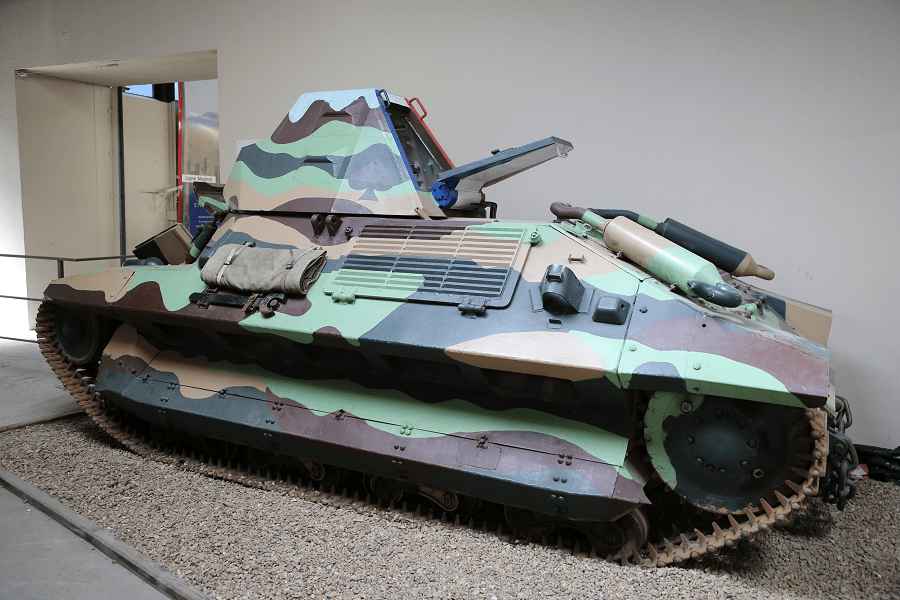The FCM 36 or Char léger Modèle 1936 FCM, was a light infantry tank that was designed for the French Army prior to World War II. It had a crew of two and was equipped with a short 37 mm main armament and a 7.5 mm coaxial machine gun. Power was provided by a diesel engine.
In 1933 the Hotchkiss company proposed to build a cheap mass-produced light infantry tank. In reaction to this proposal the French Army invited the whole of French industry to offer alternative designs. In the end three of the competing prototypes would be taken into production: the Hotchkiss H35, the Renault R35 and the FCM 36.
The Forges et Chantiers de la Méditerranée (FCM), located at Toulon, had some previous experience with tank production as it had constructed the ten giant Char 2C tanks in 1921 and had been involved in the development of the Char B1. Engineer Bourdot, who had designed the suspension of the Char B, was ordered to create a modern tank design taking full advantage of the large electro-welding capacity of the wharf. In March 1934 he presented a wooden mock-up that was approved by the Army. On 2 April 1935 the prototype was delivered to the Commission de Vincennes, with a turret equipped with two machine-guns.
The commission was quite impressed by the vehicle, especially because of its welded sloped armour and the use of a diesel engine promising a good range. It was a bit heavier than the specified nine metric tons at 10,168 kilogrammes. However the prototype was untestable because of mechanical problems. After the first evaluation had been finished on 9 June it was sent back to the manufacturer.
The FCM 36 is a small vehicle, 4.46 m long, 2.20 m high and 2.14 m wide, with a crew of two. It has a weight of 12.35 metric tons. The armour consists of many panels electro-welded together into an pyramidal shape to avoid shot-traps and fully implement the principle of sloped armour. Such a configuration was unique at the time. This included the upper track run and the suspension units, protected by zig-zag armour plates.
The engine deck is the only armour which is bolted as this enables easier access to the engine. As the armour is of good quality, the 40 mm thickness angled at 30 to 45 degrees from the vertical, renders an equivalence of about 45–55 mm, enough to regularly defeat the standard anti-tank guns of its day, even when the gun was ideally positioned. The reclining armour implied that more raking shots would quickly start to deflect. The type was the only actually produced French tank of the period that featured a diesel engine, which gives the vehicle a superior range of 225 kilometres from a fuel tank of 217 litres.
In other aspects, it conformed to the French design standards. French tanks were usually slow compared to their German, British or Soviet counterparts. The V-4 91 hp Berliet diesel allows for a top speed of just 24 km/h (15 mph). The suspension is accordingly simplistic, consisting of eight road wheels per side sprung by eight vertical coil springs. The tank can cross a two metres trench and climb a 70 cm obstacle or an 80% slope. Also very limited is the armament: apart from the 7.5 mm Châtellerault MAC31 machine gun, the standard short L/21 37 mm SA 18 gun is fitted, a cannon with very poor anti-armour capacity.
Manufacturer: Forges et Chantiers de la Méditerranée (FCM)













